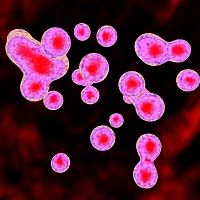Stem Cell-Derived Beta-Cells Offer Potential Novel Treatment Approaches for Type 1 Diabetes
Investigators from Washington University and Harvard University have used stem cells derived from patients with type 1 diabetes mellitus to produce cells that secrete insulin in both cultures and mice.

Investigators from Washington University and Harvard University have used stem cells derived from patients with type 1 diabetes mellitus (T1DM) to produce cells that secrete insulin in both cultures and mice.
Team members derived and characterized human-induced pluripotent stem cells (hiPSCs) from the skin fibroblasts of donors. They then adapted the cells to suspension culture to undergo differentiation and produce stem cell beta cells (SC- β cells).
A previous publication from the same study group reported that the process had succeeded in taking hiPSCs from non-diabetic donors and producing SC- β cells. The new study produced SC- β cells from patients with T1DM as well as non-diabetic donors.
Glucose-stimulated insulin secretion tests performed in the lab showed that the SC- β cells produced from both diabetic and non-diabetic donors were able to respond to sequential glucose challenges. On average, when exposed to 20 mM glucose, the cells from 9 diabetic donors secreted 2.0 μIU ± a standard deviation of 0.4 μIU of human insulin per 103 cells. The cells from 9 non-diabetic donors secreted 1.9 ± 0.3 μIU of human insulin per 103 cells.
The investigators also exposed a subset of the SC- β cells from both donor types to 3 diabetic compounds that affect insulin secretion by different mechanisms: a sulfonylurea (tolbutamide), a GLP-1R agonist (liraglutide) and a GCK activator (LY2608204). The tests showed that treatment with each of the compounds increased insulin release at both low-glucose and high-glucose challenges by (on average) a factor of 2.
SC- β cells from both types of donors were then transplanted into non-diabetic mice. A couple weeks later, the investigators checked the mice for human insulin, injected them with glucose, waited 30 minutes and then checked them once more for human insulin.
Overall, 81% (26/32) of the mice with SC- β cells from diabetics and 77% (37/48) of the mice with SC- β cells from non-diabetic donors secreted more human insulin after glucose injection. (The ratio of human insulin before and after the shot was about 1.5 for both groups.) The grafts continued to function, moreover, for more than 5 months in vivo.
“The lack of observable gross deficiencies in [diabetic] SC-β cells combined with their functional phenotype indicates the potential utility of these autologous cells in cell replacement therapy for diabetes for at least a proportion of the T1DM population,” the study authors wrote in Nature Communications.
The cells — which seemingly could be reproduced almost endlessly — could also be used in other research that would benefit from a way to study how β cells react to different stimuli.
“These experimental approaches could directly be used for discovery of novel compounds that increase function and prevent stress and death in β cells.”
For the investigators behind the new study, the ultimate hope is that their work will lead the way to either a cure for T1DM or at least a treatment that radically improves upon what’s currently available.
Other research teams have had some success in treating T1DM by transplanting pancreatic β cells from non-diabetic organ donors, but even if that technique were perfected, the supply of donated tissue almost always falls short of supply. Deriving β cells from the patients who need treatment should eliminate supply problems, along with any cell rejection issues.
“There had been questions about whether we could make these cells from people with type 1 diabetes,” said Jeffrey R. Millman, PhD, the first author of the new study. “Some scientists thought that because the tissue would be coming from diabetes patients, there might be defects to prevent us from helping stem cells differentiate into beta cells. It turns out that’s not the case.”
Millman said the technique could be ready for human trials in 3 to 4 years.